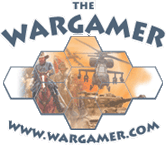|
Home » Articles
» PC
Game Review
Jumpgate
Atomic Batteries to Power…Turbines to Speed…
Once the gamer launches from a station for the first time, it's
likely that he won't notice how easy Jumpgate is to use,
because to be honest, it's pretty daunting to play. While games such
as EVE or Earth and Beyond use point-and-click control
schemes to get around, making them almost instantly accessible,
everything in Jumpgate is manual, from flying to mining to
docking. This is both a blessing and a curse. If the gamer just
starting out, the game can be exceedingly hard and unforgiving
without a lot of practice.
Gamers can use anything from a mouse and keyboard combination to
a full HOTAS (Hands on Throttle and Stick) setup to control the
spaceship in Jumpgate. While I personally prefer a full HOTAS
setup, several successful pilots use only a mouse with a keyboard as
their primary flight controls.
Jumpgate uses NetDevil's DANCER (Drag And
Near-true-physics Combined to Engineer Reality) for its flight
engine. This flight engine is similar to Elite or
Independence War in that it's Newtonian based, but different
in the way that it includes drag, so ships will eventually slow down
to a stop upon cutting their engines. For those used to flight
engines from games such as Freespace or X-Wing,
they're in for a rude awakening upon playing Jumpgate.
I must say that once I got used to the unique physics of the
game, I had a much better time of things. While it's awkward at
first, with enough practice it becomes second nature. This, in turn,
points to one of Jumpgate's strong points: its requirement of
skill and practice. Again, games such as EVE or Earth and
Beyond require no practice in order to play the game, as
everything is point-and-click based.
Jumpgate, on the other hand, requires practice, patience,
and skill to master. Take my own example. I've been playing
Jumpgate for several years, and in that time, not once have I
been able to shoot down another human pilot. This is because I've
spent much of my time in the game mining asteroids and hauling
cargo. When it comes to Player Vs. Player (PvP) combat, I'm fairly
useless. Readers may notice, for example, that none of the
screenshots feature combat…now you know why. This hasn't made the
game any less fun for me, however, so it's nice to know that the
game rewards both combative and non-combative pilots.
Whichever ship gamers prefer to fly, they will always need to
think about speed, shields, and armor. Each of those factors is
easily identified in the game's default Heads Up Display (HUD).
Furthermore, several user-created HUD's are available to further
suit individual tastes. The HUD shows speed, shield and armor, as
well as the direction the ship is flying in. The HUD makes it easy
to find and fly to a target, as well as keep track of any
ammunition, flashfires (temporary speed boosters) and missiles the
gamer might have.
Overall, once through the initial learning process, flying around
in the game eventually becomes intuitive. It's this initial period,
however, that might turn impatient players off to the game, which
would be a shame, as they'd be missing out on the best part of the
game that's yet to come.
 |
.jpg) |
|
Hiding among the asteroids. |
Attempting to fly in formation while carrying
large Nuclear missiles. |
Choices, Choices, and More Choices…
Jumpgate is a fully open-ended game. Once logged on,
gamers can do pretty much whatever they want, once they've got some
missions under their belts. For a new pilot, that usually means
taking simple transport or mining missions from the mission computer
found in most factional stations (stations in
unregulated/nonfactional space, as well as player owned station,
don't have mission computers). While these missions might seem
boring at first, they're essential in gaining credits and experience
needed to advance to the more fun activities.
Once the player has gained some levels and credits, the first
choice is usually what to buy. Jumpgate gives the player a
veritable shopping mall of choices in which to spend their credits.
Besides spending it on a new ship, it's possible to purchase power
plants, engines, guns, missiles, capacitors, shields, and more.
These choices allows for a wide variety of ship configurations, and
while each ship has an "optimal" configuration that usually requires
a good amount of credits and experience, gamers can easily upgrade
their ship piece by piece.
Each ship has a maximum amount of room available for a specific
piece of equipment. For example, a small shuttle might only allow
for a size two power plant and size one engine, while larger ships
allow for much larger pieces of equipment, such as size six engines
(the biggest in the game). Each piece of equipment also has a level
requirement, but this is easily circumvented by "brokering", wherein
a higher-level player will purchase a better piece of equipment for
lower-level players.
While on the topic of brokering, I must mention Jumpgate's
insurance structure. Jumpgate uses an insurance rating so
that, if a gamer destroys his ship and flies back to base in an
escape pod (gamers never "die" in Jumpgate), they get a
portion of the value of their insured equipment and cargo back in
credits, so that they can purchase equipment and cargo lost along
with the ship. This insurance rating is based on several factors,
such as missions completed, successful launches and landings, and so
on. I mention insurance now because if a gamer purchases a piece of
"brokered" equipment, he won't get credit back for it if it is lost
upon due to his ship being destroyed. |

.jpg)




.jpg)

.jpg)
.jpg)